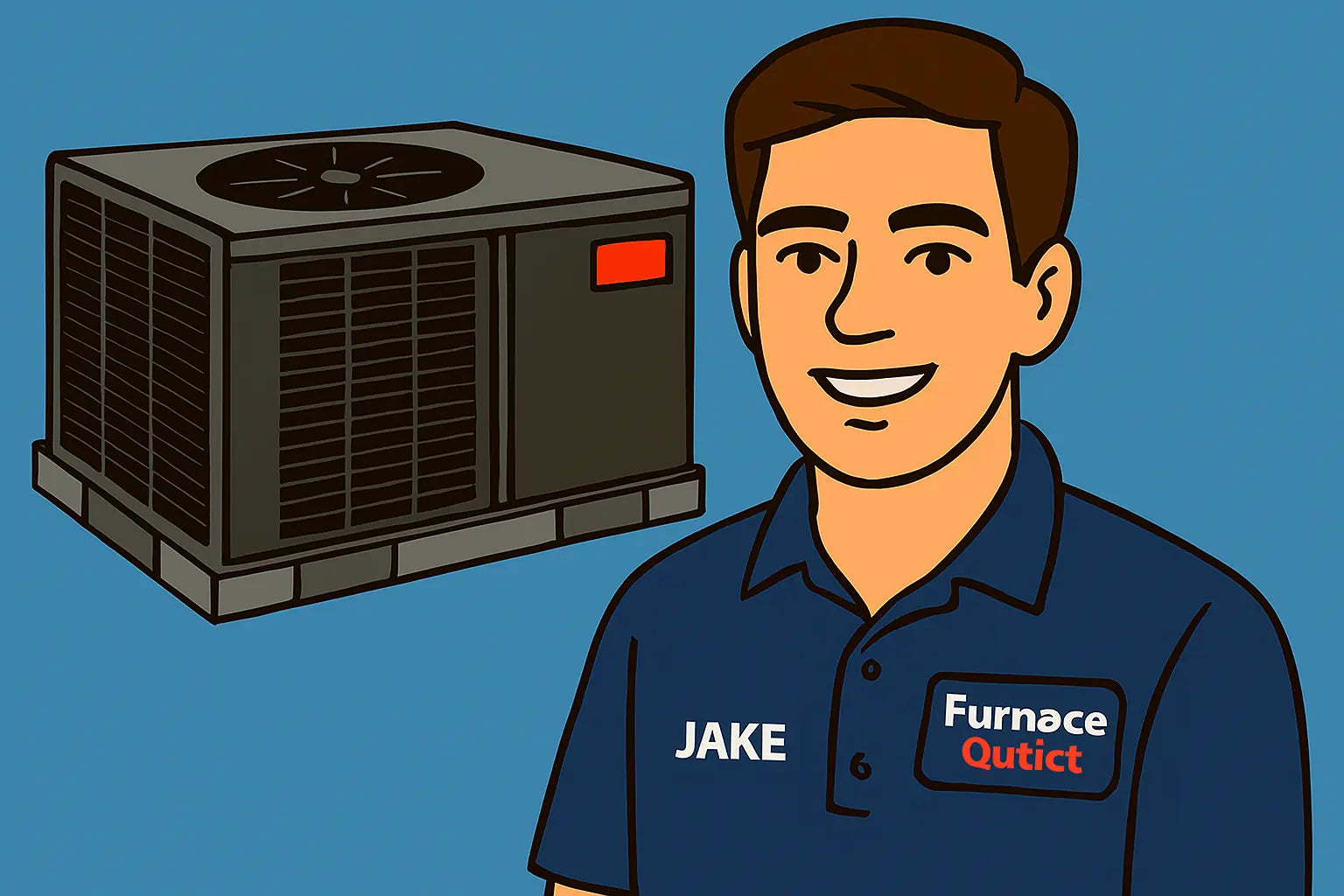Jake Here, Folks.
I’ve got a public service announcement: a lot of “AC problems” aren’t the fault of the AC unit. They’re the fault of ductwork so bad it looks like a raccoon built it during a power outage.
Your Goodman GPCH33631 could be fresh out of the box, charged perfectly, and humming along—but if your ducts are undersized, leaking, or blocked, you’re just making that compressor work harder for half the cooling. And that, my friends, is a one-way ticket to higher bills and early failure.
So, let’s get your airflow sorted.
Step 1: Understand Your Airflow Target
The GPCH33631 is a 3-ton system, which means it’s designed for about 1,200 CFM (cubic feet per minute) of airflow. That’s roughly 400 CFM per ton.
If your duct system can’t move that much air without excessive static pressure, you’ll see:
-
Weak airflow at vents
-
Frozen coils
-
High head pressure
-
Skyrocketing energy use
The ACCA Manual D is the industry go-to for duct design, and I recommend skimming it if you want the official math.
Step 2: Duct Sizing Basics
The size of your ducts matters more than you think. Undersized ducts = low airflow = sad compressor. Oversized ducts = poor air velocity and comfort issues.
For a GPCH33631:
-
Main supply trunk: usually 14–16 inches round equivalent
-
Main return: usually 16–18 inches round equivalent
-
Branch runs: size according to room load (6–8 inches round for most rooms)
Static pressure should stay under 0.5 inches of water column for most residential setups. Use a manometer to check.
The Energy Star duct sizing guide has a great quick-reference table.
Step 3: Keep It Sealed Tight
Even a perfectly sized duct system is worthless if it leaks like a garden hose. Seal it up with:
-
Mastic sealant for metal-to-metal joints
-
UL-181 foil tape for seams (never duct tape—it dries out)
-
Proper gaskets at air handler connections
Studies show that the average home loses 20–30% of conditioned air through leaks. That’s like throwing money out the vent. The Department of Energy has a full breakdown on sealing best practices.
Step 4: Minimize Restrictions
Your airflow is only as good as your least-efficient bend. Things to avoid:
-
Sharp 90° turns (use long-radius elbows)
-
Kinked flex duct
-
Crushed runs from storage or poor routing
-
Oversized filters with high resistance
If you must run flex duct, pull it tight so the inner liner is smooth, not rippled like an old sock.
Step 5: Balance the System
Air balancing means making sure each room gets the right amount of airflow—not too much, not too little.
-
Install balancing dampers in branch lines
-
Measure airflow at supply registers with an anemometer
-
Adjust dampers until airflow matches the calculated load for each room
This isn’t just about comfort—it’s about keeping the GPCH33631’s evaporator coil evenly loaded for max efficiency.
Step 6: Check for Return Air Problems
I’ve seen more horizontal Goodman units starve for return air than I can count. Symptoms? High static pressure, noisy operation, warm supply air.
Fixes:
-
Increase return grille size or add another return path
-
Keep return duct runs as short and straight as possible
-
Avoid filters in multiple locations unless designed for it
Step 7: Insulate Where Needed
If your ducts run through unconditioned spaces (attics, crawlspaces, garages), they need insulation—R-6 minimum in most codes. Without it, you lose cooling before it even gets to the vents.
Step 8: Measure, Don’t Guess
The only way to know if your ductwork is actually delivering is to measure:
-
Static pressure (before and after coil)
-
Supply and return CFM
-
Temperature split across the coil (target 18–22°F)
The National Comfort Institute has some excellent resources on airflow measurement.
Step 9: Integrating with the GPCH33631
When installing or upgrading ducts for a horizontal unit like the GPCH33631, make sure the transitions to the air handler are smooth and properly sized. Avoid sudden changes in duct dimension, and always line up the duct centerline with the blower outlet.
And if you need specs for that exact Goodman model, here’s the GPCH33631 product page I use on jobs.
Common Rookie Mistakes
-
Using flex duct everywhere without proper supports
-
Forgetting to size returns for full system airflow
-
Sealing with duct tape
-
Ignoring static pressure readings
-
Assuming “it’s fine” because the vents feel cool
Final Thoughts
And there you have it—ductwork and airflow tuned like a pro. Your GPCH33631 will thank you with quieter operation, better cooling, and a longer life.
If you take away one thing, it’s this: your AC is only as good as the ducts feeding it. Get them right, and you’ll be sitting pretty no matter how hot it gets outside.
For all the specs, details, and to see the unit I’m talking about, check out the Goodman GPCH33631 product page. Now grab your manometer, check your static pressure, and enjoy the satisfaction of airflow numbers that hit right where they should.
Need more advanced troubleshooting tips? Visit my guide: The Field Guide to Troubleshooting the GPCH33631: From “Won’t Start” to “Won’t Cool”.
- Jake out 🍺







